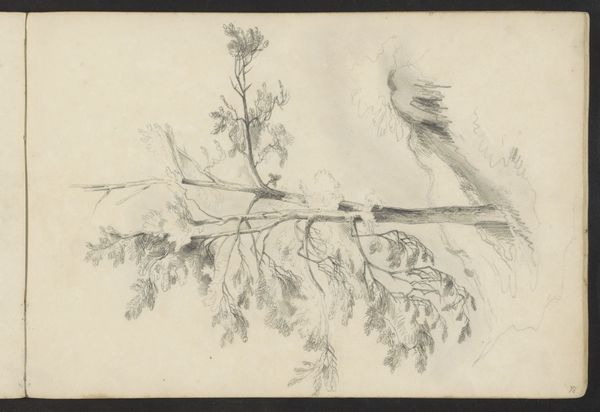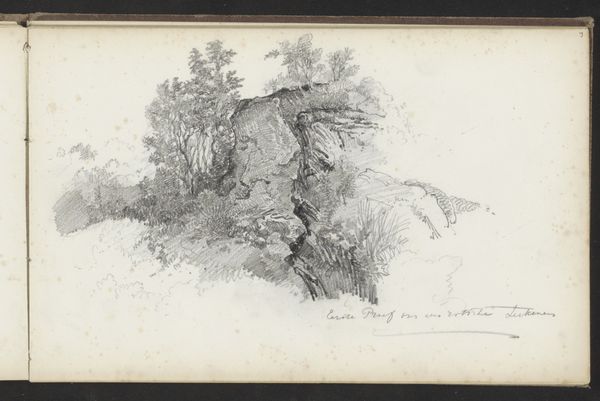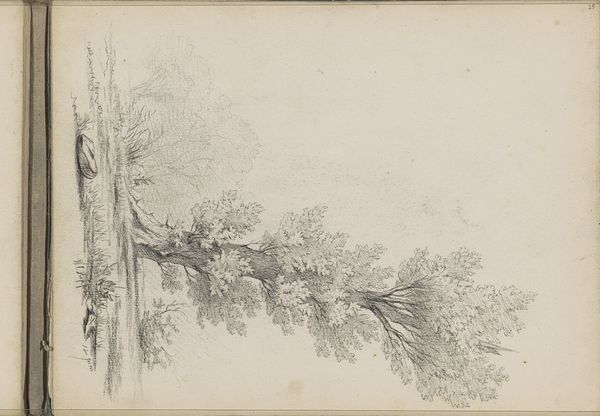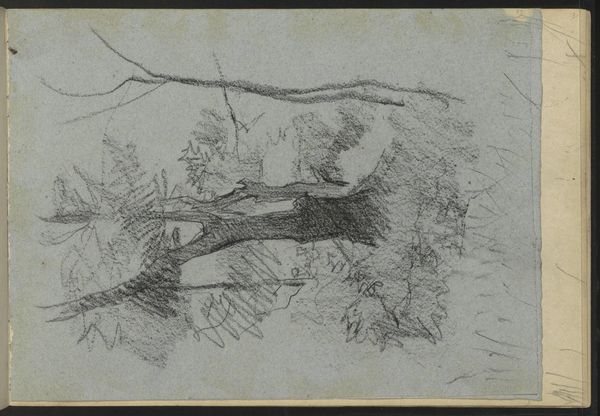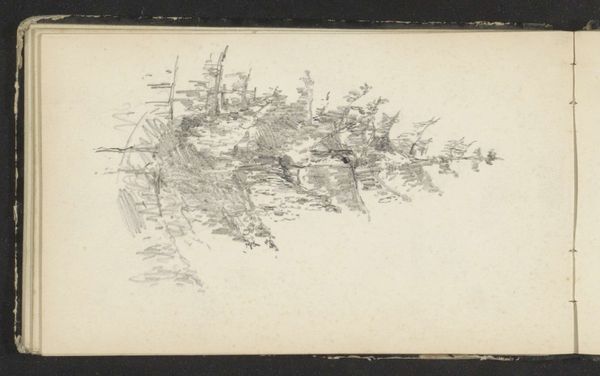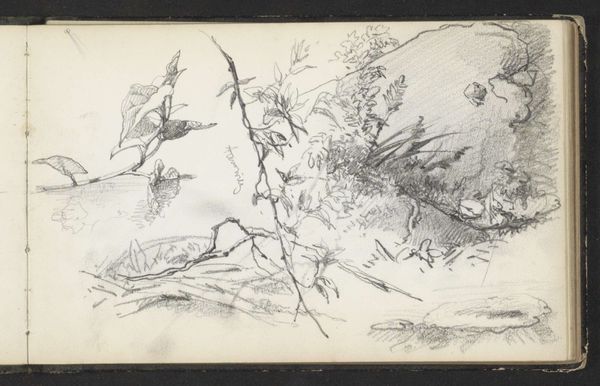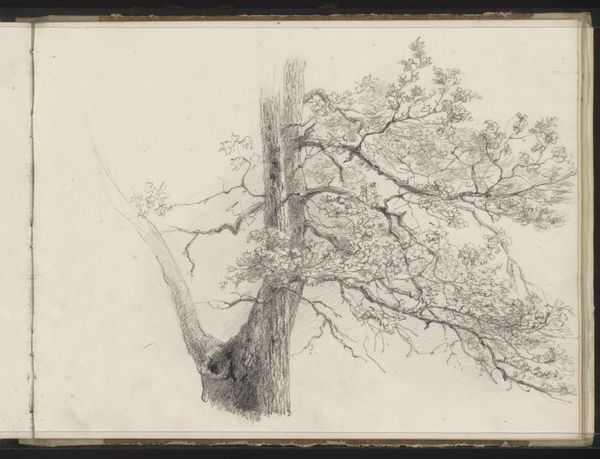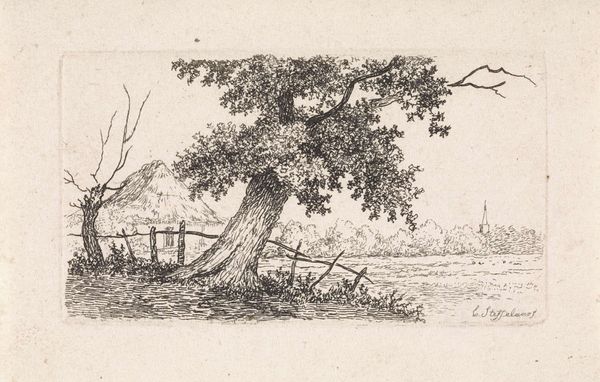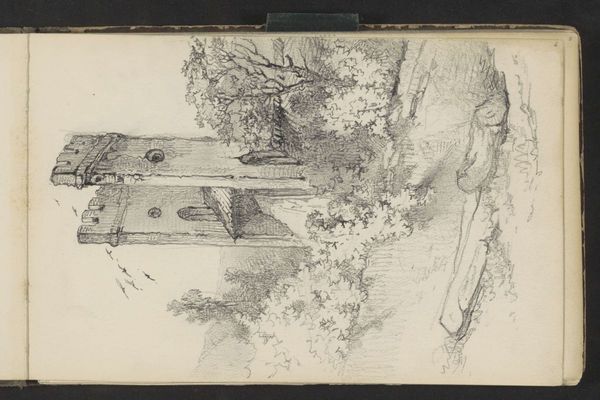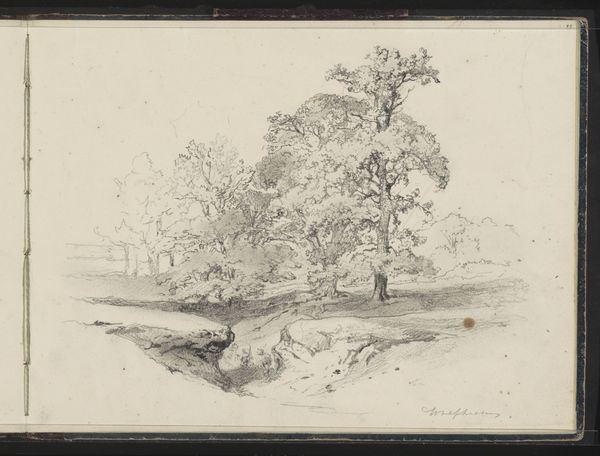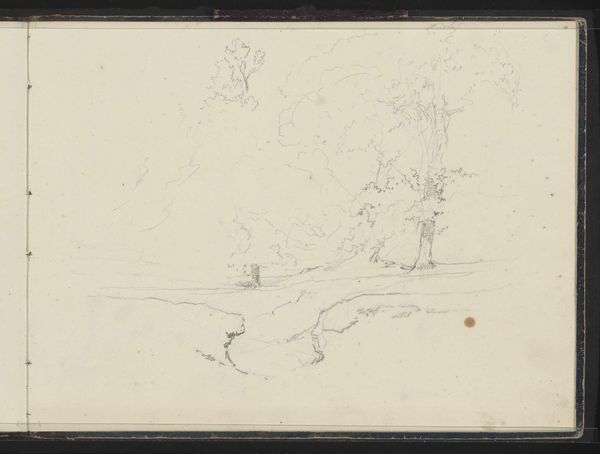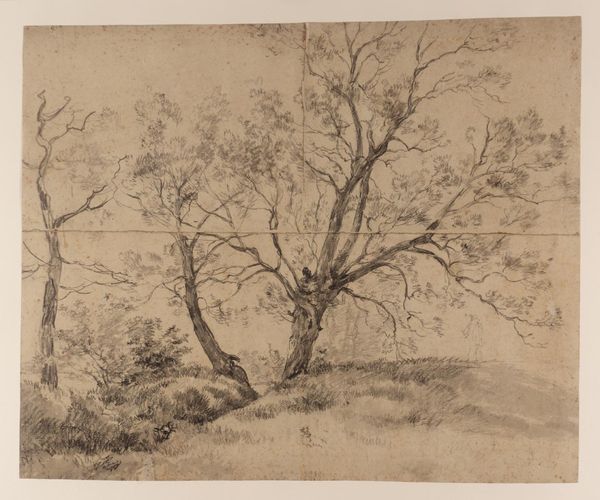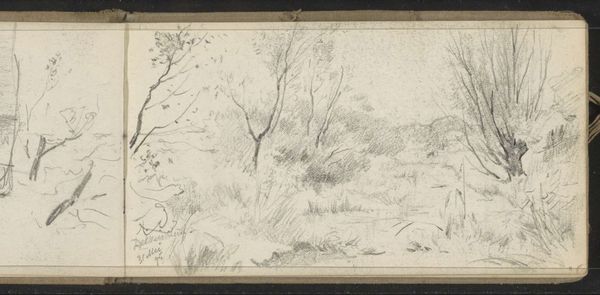
Copyright: Rijks Museum: Open Domain
Editor: We're looking at "Boy in a Forest," a pencil and graphite drawing on paper by Johan Hendrik Weissenbruch, created sometime between 1834 and 1903. It's currently housed in the Rijksmuseum. The drawing is quite understated, but it evokes this feeling of quiet observation. What's your take on it? Curator: What strikes me is Weissenbruch’s engagement with the raw materials. It's a direct encounter between artist, pencil, and the Dutch landscape. We often celebrate the *finished* landscape painting, but this sketch reveals the artistic labor that often goes unseen, hidden behind layers of paint and varnish. Look closely at the varying pressures of the graphite. What kind of physical work does that reveal to you? Editor: I see how he’s built up the darker areas with denser hatching. It feels very immediate and tactile. It almost makes me think about deforestation and land use, issues that were becoming pretty pressing in Europe during that time. Curator: Precisely. While seemingly simple, Weissenbruch’s choice to depict the *means* through which we experience nature raises interesting questions about our relationship to it. Is the sketch simply a preparation for a future painting, or is it a statement in itself, celebrating the value and labor of rendering nature? Think about who had access to pencils and paper and how this might be connected to their economic and social standing. Editor: That's a perspective I hadn't considered before. I was focused on the aesthetic, but you're right, looking at the materials and the act of creation itself offers a deeper understanding. Curator: The labor embedded within art often gets overlooked. Analyzing the ‘how’ and ‘why’ behind a piece can be more revealing than just looking at the ‘what’. Editor: I'll definitely look at drawings differently from now on! Thanks for the insight.
Comments
No comments
Be the first to comment and join the conversation on the ultimate creative platform.
